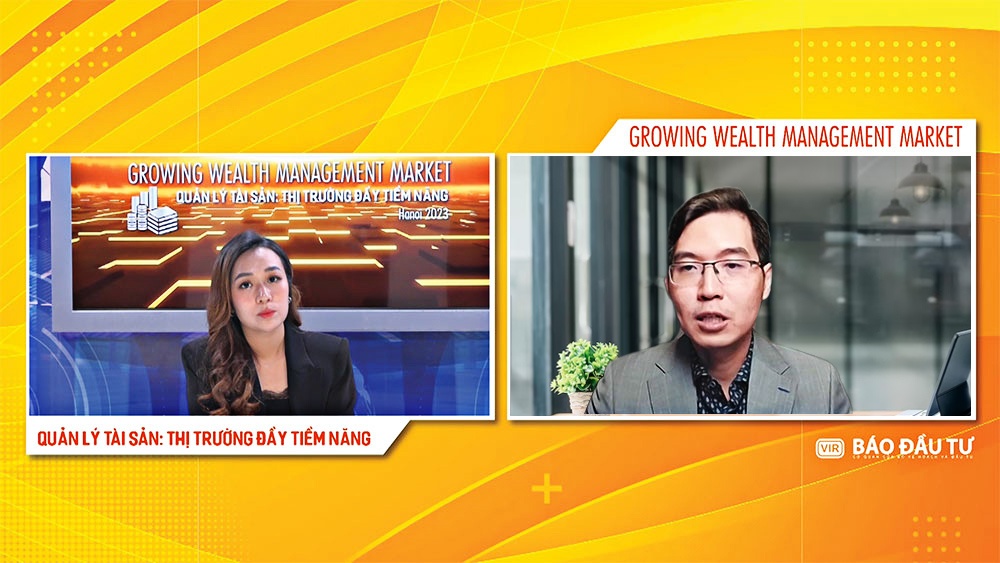Big players developing asset management services for all
What solutions does wealth management offer, with it focusing on customers rather than individual products?
 |
| Dat Tong, senior market strategist at Exness |
The overall use for wealth management services in developed countries includes consulting services. Wealth management is understood as all needs and desires related to personal finance of the individual customers in different life cycles, helping them make medium- and long-term plans to ensure that those financial plans have a chance to become reality.
Especially important is the implementation of the plan. That financial plan must ensure the customer’s view of risk that they are able or willing to accept.
This is key because the level of understanding and risk tolerance of customers is wholly different. Two customers may be thinking about investing to have a profit of 10 per cent annually, for example, but each customer can tolerate a different level of risk and so we need to plan for their investment must also be different.
If we cannot do that, we will most likely advise them to provide a single type of common investment, and this will negatively affect the results of each customer when risks occur.
After we have successfully put across the risk perspective of the customer, then we come to the next stage, which is to advise on investment products and roadmaps that can best meet the needs of their financial goals and, at the same time, manage risks corresponding to those goals. This is the stage of capital allocation through providing financial investment products to customers.
The final stage is to monitor, evaluate, and change if necessary the plans in a cycle consistent with the plans that the customer and the unit performing the wealth management business have proposed to each other.
In Vietnam today, we are still just trying to sell investment products and lack the skills and systems to store and analyse data about customers’ investment needs.
What do you think is the ideal picture for the personal wealth management segment in Vietnam, assuming the barriers are removed?
I believe that in just a short time, we can remove the technical barriers so that this field can truly promote its picture potential.
The State Bank of Vietnam and the Ministry of Finance need to coordinate to expand the current technical barriers related to licences regulating commercial banking groups as well as financial companies to build and deploy a number of investment products. It should allow financial companies and banks to act as customer representatives, brokers, and transfer orders to other financial and investment companies.
We need to expand the mechanism to be able to build more diverse types of investment products and accumulate assets. The more options there are, the more accurately and fully meet the unique financial planning and risk management needs of each different customer group, avoiding the need for equal risk acceptance just to offer products for sale at present.
Coordination between governing agencies and new guidelines also allows banks and financial companies to connect with each other strongly to create extensive links and increase the efficiency of the entire system.
In addition, it would be good to have strong support for the presence of new fintech companies in the country as well as abroad, in order to meet the needs of technology and risk management knowledge.
Risk and investment experience is diverse and different in different types of markets, not only in the country but also reaching out to other countries in the region. Besides that, we also welcome more new investment products and enrich the accessibility of all groups of people who need to manage their assets everywhere. It is even possible to sell good investment products from the Vietnamese market to the regional market.
It is difficult to establish a profitable wealth management company in any nation, let alone one that is currently a frontier market transitioning to an emerging market. This entails putting together the ideal selection of goods and services, developing teams and subject-matter experts, deciding on and carrying out market-appropriate strategies, obtaining exceptional delivery, and improving the user experience.
 |
| Photo: Chi Cuong |
Do we still have a lot of potential for the wealth management segment to continue to develop more prosperously?
There is an example that in the US, only one in 10 people die rich, which means leaving a legacy for the next generation. Despite that, the entire wealth management industry in the US has developed strongly and brought great added value to society. I believe that in Vietnam this number will be higher due to the frugal spending nature of local people.
Big players in the financial industry in Vietnam are also developing their own asset management services with many features and privileges suitable for domestic customers. This shows the great potential of the asset management industry and expands investment opportunities, building personal finance in a methodical and professional way for Vietnamese people, especially the future generation of investors.
Besides this, we are also gradually entering the stage of transferring assets from the population group called baby boomers to Generation X. This stage is extremely important for overall solutions from planning asset transfer and supporting individuals in the receiving group to be able to protect and develop that group of inherited assets in order to be safe and maximise the opportunities offered by the market.
I think the next game is a bigger game and I hope there is coordination between relevant parties as mentioned so that the entire financial market can accept this opportunity.
Depending on the level of assets, customers can allocate different investment areas. What are the most popular personal investment channels today?
Each of these client segments has very different and unique needs. For instance, when we engage with millennials and their families, we need to understand their lives and objectives, then we can open up on asset allocation, a broader approach, their succession planning, and so forth. We need to emphasise the power of compounding, the value of setting goals, and portfolio management.
A portfolio of investments consists of many asset classes including stocks, bonds, real estate, and other asset classes. Among that, we must also mention that the market for new investment channels is tapped into by many people with large assets, especially young people that often tend to prefer new and quicker approaches.
I do not list investment-linked products of insurance companies in the classification of individual investment channels because of the different nature of channels that wealth management can distribute.
Investors are frequently time-sensitive or preoccupied with conventional assets like gold and real estate. The asset management and wealth management sectors need to do a better job of informing these investors about the products available, the risks and rewards associated with them, and the role they can play in bolstering their long- and medium-term personal finances.
Business and investing both include risk, but successful investors may strike a balance between the two and meet their objectives. One of the key components of risk management in investing is portfolio diversity.
How should an individual allocate assets to both ensure safety and optimise long-term growth?
The first rule of legendary investor Warren Buffet is not to lose money, and his second rule is to review the first rule. This reflects that protecting assets and investments is always a priority, before thinking about how much profit the entire market generates.
Ray Dalio’s Bridgewater hedge fund scenario mentions portfolio management as being split into spring, summer, autumn, and winter seasons, and the economic cycle is similar when we can fall into economic periods with high growth and high inflation, high growth but low inflation, low growth with low inflation, and low growth with high inflation.
These economic cycles are constantly rotating and affecting the prices of goods and assets throughout the economy. The portfolio that we allocate, if not deep and wide enough, will have difficult years when the business cycle does not fit the portfolio, for example, with too many stocks, or bonds in a low growth cycle.
Therefore, the portfolio should always include the different asset classes that the Bridgewater fund recommends including: 30 per cent in stocks, 40 per cent into long-term bonds, 15 per cent in short- and medium-term bonds, 7.5 per cent on goods, and 7.5 per cent in gold.
It should be noted that this is just an example for reference in portfolio investment thinking. We need to manage and increase and decrease much more deeply in each of the above asset groups and change the relative weight for each. Only the upcoming macro story can ensure a deep and wide enough allocation in the portfolio.
In particular, it should be noted that buying many different types of stocks does not mean diversifying the portfolio, but it is necessary to choose asset classes that do not have too high correlation to make sense in the allocation diversification in asset investment.
 | The subtle art of choosing a foreign exchange broker The forex market is the most liquid market in the world, with approximately $5 trillion traded per day. Tong Quoc Dat, senior market strategist from Exness, explains how to choose a forex broker and why the major banks are active in this arena. |
What the stars mean:
★ Poor ★ ★ Promising ★★★ Good ★★★★ Very good ★★★★★ Exceptional
Related Contents
Latest News
More News
- Securing capital and efficiency for Vietnam’s 2026-2030 growth ambitions (December 17, 2025 | 10:00)
- Energy sector in need of blended finance mechanisms (December 17, 2025 | 09:00)
- Vietnam still has room to mobilise capital for sustainable growth (December 17, 2025 | 08:57)
- Long-term capital seen as key hurdle to green growth (December 16, 2025 | 08:00)
- Gold prices swing amid tax debate and import uncertainty (December 15, 2025 | 18:04)
- Agribank frames bank credit as catalyst for green growth (December 15, 2025 | 17:59)
- Vietnam’s green transition demands collective financial action (December 15, 2025 | 12:00)
- VIR workshop highlights capital and policy for sustainable development (December 15, 2025 | 11:00)
- Promoting digital assets initiative in Vietnam (December 13, 2025 | 09:30)
- Experts flag gaps as national financial strategy under review (December 12, 2025 | 15:13)

 Tag:
Tag:






















 Mobile Version
Mobile Version